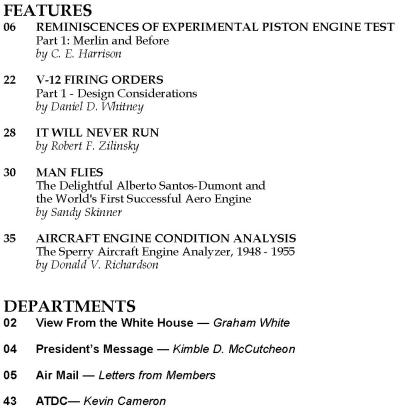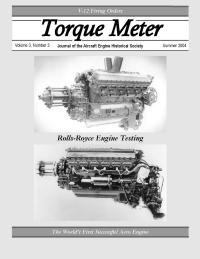
Torque Meter
Summer 2004 Issue
 |
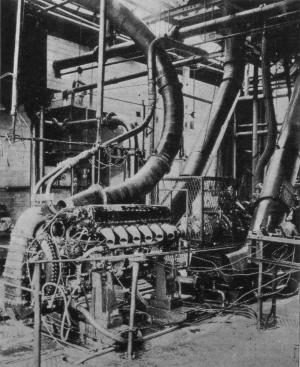 |
Reminiscences of Experimental Piston Engine Tests, Part 1 "In 1930 my family moved to Derby and as a 15-year old school boy I was well aware that this was the home of Rolls-Royce who made the engines that held so many world records. While at Derby School three miles across town from Royce’s, as Rolls-Royce is locally known, I frequently heard what I later realized were R engines running open exhaust in preparation for an attempt on land, air or water speed record. In about 1931 we had a school visit to the factory. The speedboat Miss England happened to be at Derby as we gazed with amazement at the seemingly complicated R engine cam and rocker mechanism uncovered for maintenance. There could be no question that Rolls-Royce standards were magnificent. In 1931 I applied for an apprenticeship but due to scoring a couple of distinctions and topping the matriculation results the headmaster talked my parents into keeping me at school. However I eventually, via the back door, got into Rolls-Royce. After periods in the machine shop, inspection and production control and turning down a chance of a job on the works managers staff, finished up on the experimental beds." This is the account of Chris Harrison, a Rolls-Royce engine tester, who saw them all, from the "R" racing engine to the amazing Crecy. |
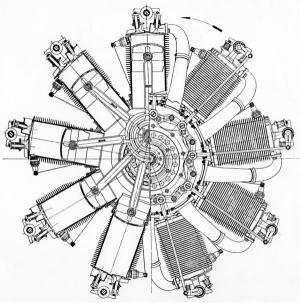 |
It Will Never Run I was to hear these words many times from just about everyone. All those "It will never run" people are now "I see it but don’t believe it" fans. An account of a Le Rhone rotary engine restoration. |
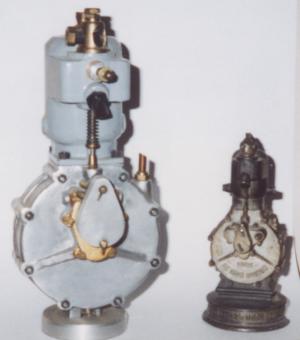 |
Man Flies Nothing can dim the glory of the Wright Brothers’ flight at Kill Devil Hills in 1903. The brothers transformed the heavier than air flying machine from a toy into a practical and above all controllable forefather of every aircraft up to the wide bodied jet. While we celebrate the Wrights, let’s not forget Alberto Santos-Dumont who five years earlier produced the first purpose-built internal combustion (IC) aero engine which propelled him around Paris in his Dirigible No. 1. It was twice the capacity of any other reasonably light IC engine, ran at speeds regarded as insane by the engineering establishment and produced creditable specific outputs by weight and engine capacity. |
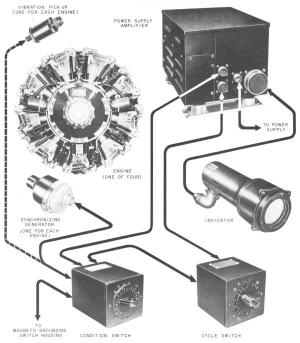 |
Aircraft Engine Condition Analysis The Sperry Aircraft Engine Analyzer was a CRT "scope" which showed individual spark plug condition in the final generation of 18 and 28 cylinder reciprocating engines. These were used on multiengine aircraft such as the Lockheed Constellation, Douglas DC-7, C-124, Boeing B-50, C-97, B-377 and Convair B-36. John Lindberg, a Pan American Airlines engineer, came up with the Engine Analyzer concept. Shortly after joining Sperry as a project engineer, just as the first Lockheed Constellation analyzers were installed, Liondberg took over new analyzer versions and installations in other types of aircraft. |
